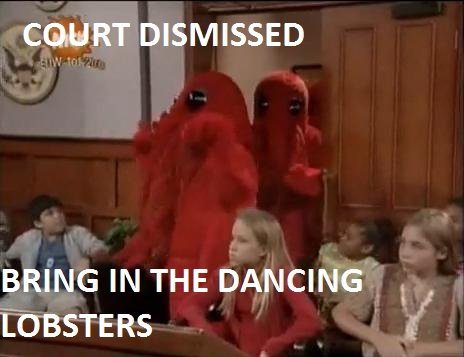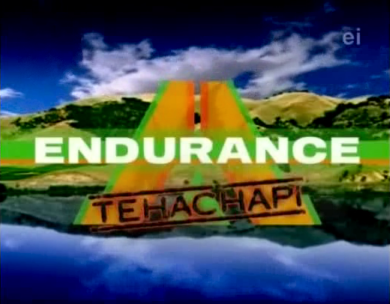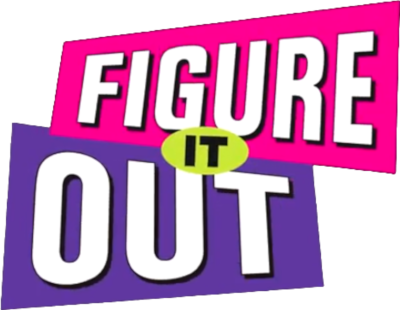Now, you may have read in my earlier blog posts about one of my personal top five game shows— it remains a standout to this day— but for this post I'll be detailing more about this show, whose name is Legends of the Hidden Temple.
For the most part, every fan of the 90s and 2000s generation seems to be content about the show as a whole— the only exception is that almost well over one-third of the generational community has pretty much stereotyped the show as "the one where the kids suck at assembling the Silver Monkey, which is just three doggone pieces!", but only a select rotation of people on YouTube and other sites know the series' tenure and its production well enough (myself included). I will begin by saying that this was one of Nickelodeon's most memorable shows that ever existed in its history, although the 90s Are All That unnecessarily discredits it by crowning other good shows like Kenan and Kel, Hey Arnold!, etc. higher than its deserved position; nevertheless, Legends (along with GUTS— do you have it?!) has the best formula of psychology-and-tenacity-themed challenges respectively titled Moat Crossing, Steps of Knowledge, Temple Games/Tiebreaker, and Temple Run.
Not doing the show's outline first, I'll open my review with the production and casting process of the show. There are three seasons, each with forty episodes— all episodes are partitioned by the layout of Olmec's Temple; every version featured twelve room spaces, which were constructed with a two-and-a-half floor diagram in six columns, as follows here— all rooms will be discussed later on in the blog:
RIGHT SPACES: Upper Entrance (Room of the Three Gargoyles, Room of the Royal Gongs, Crypt) and Lower Entrance (Cave of Sighs, Ledges)
RIGHTMOST SPACE: Pit of Despair (Wall Climb, Troubled Bridge, Wheel Room, Rock Quarry, Pit of the Pendulum, etc.)
MIDDLE SPACES: Top of the Central Shaft (Observatory, King's Storeroom), Center of the Temple (Heart Room, Medusa's Lair, Room of the Mandarin Hand, Chamber of the Sacred Markers) and Bottom of the Central Shaft (Throne Room, Room of Harmonic Convergence, Laser Light Room, Tomb of the Headless Kings)
MIDWAY LEFT SPACES: Top Third Column Room (Room of the Golden Idols, Treasure Room, Treasury of Golden Orbs, King's Storeroom, Room of the Ancient Warriors) and Bottom Third Column Room (Swamp, Spider's Lair, Bamboo Forest, Holes of Python, Jester's Court)
LEFTMOST SPACES: Shrine of the Silver Monkey and Gold Doors (Tomb of the Ancient Kings, Dark Forest)
LEFT SPACES: Upper Corner (Torch Room/Room of Three Torches, Pirate's Cove, Viper's Nest, Lightning Ball Room, Room of the Secret Password) and Bottom Corner (Mine Shaft, Dungeon, Well, Quicksand Bog, Pharaoh's Secret Passage tunnel slide)
So, how do you get on Legends, GUTS, Figure It Out, et al you ask? As far as the casting process goes, ads for Nick game shows would be placed in nationwide newspapers and parents, tweens and teens alike would answer these ads— their general motivation to respond to the ads would be because of watching the game shows or just doing it for fun! Requirements for the auditions were simple— you had to be ten to fifteen to be a contestant; also, you had to have watched Nickelodeon at least once in your life. Auditions for the show followed this general formula: physical tests with shuttle run, pull-ups, etc.; a fifty to sixty question quiz where each participant would be granted trivia about pop culture and history; and finally, testing out some of the challenges' equipment which appeared on the show. About a month later, they'd be given a call to confirm if they were gonna be on the show!
While it might sound easy, taping Legends is quite a tad more difficult than other Nickelodeon series. The contestants would arrive at Nickelodeon Studios Florida at around 8:00 AM, and twelve of each would be designated to one episode in a select rotation of four to five episodes for the production day (layouts would consist of one to three production days). When the contestants were assigned to the six teams and handed their respective colored shirts, the parents and guardians would sashay over to an annexed room to watch the televised edit which would be broadcast later— the maximum duration of each episode was twenty-four minutes and twenty seconds, with commercial breaks scattered throughout each half-hour airing. Then it was time to premiere the episode with a pre-produced opening as shown by each season:
Season 1:
www.youtube.com/watch?v=7blg_k_6TtU
Season 2:
www.youtube.com/watch?v=cVdRIQqQGhI
Season 3:
www.youtube.com/watch?v=4G_CbpT1cIc
Afterward, the six teams are introduced in this order (first names not announced until Temple Games):
The Red Jaguars
The Blue Barracudas
The Green Monkeys
The Orange Iguanas
The Purple Parrots
The Silver Snakes
As Kirk Fogg (the host) says, "They're gonna have to pass through some pretty tough physical and mental tests, but in the end, only one team's gonna have the right to enter Olmec's Temple!" However, the show's opening challenge is the Moat (which is a 3-by-5 pool with mist generators creating a haze effect on the surface); Kirk or Olmec will describe the technique which the six teams will cross the Moat— they used numerous sorts of equipment such as tightropes, rafts with a long staff attached to the overhead rope, floating rings, adjusting four planks on two poles which measure the Moat's expanse, shimmying upside-down on a long pole, stepping onto multiple "ancient Babylonian" wheels individually or simultaneously, squirming through a tunnel of dangling inner tubes, stepping across swinging platforms, swimming across with a raft that your partner balances on, traversing a fishing net horizontally or vertically with a long vine, hopping from one lilypad to another lilypad using only a gangplank, sliding across a slippery footpath, jumping across three icebergs, crawling across a wobbly bridge, etc.
If one team member fell into the Moat while traversing, they'd return to the beginning and accomplish the challenge again; once both team players had accomplished the opening challenge's task, they'd have to hit their respective gong— which was a podium with a light which would illuminate when the target on top was hit. The first four teams that succeeded in the opening challenge by hitting their gongs would have further progress added on— they'd advance to the Steps of Knowledge, which was the question-answer segment. The two teams that didn't qualify to get past the Moat would exit with a consolation prize— these included Hershey's chocolate syrup, shampoo, Fashion Bug, Chef Boyardee, Koosh Lings, Skechers packages, Melody Pops, etc.
I will discuss a few notable things about the show's Moat crossings; the shortest Moat crossings included the "rafts with King Tut's staff", "swimming and tightropes", "swing across by a rope", "iceberg hop" and "wobbly bridge", several of whom had their opening challenges finished in nearly thirty to forty seconds. The longest Moat crossings included "overhead rope pull and tightropes" and "hold a plank so your partner walks on it as a balance beam", each of whom clocked in over two minutes— the latter was much more difficult than the former, because the mist masking the plank would cause teams keeping their balance to fall off.
Two episodes in the show's tenure had two teams who were sent back after they crossed the Moat— they were John Henry's Lost Hammer (episode 5; season 1) and The Applewood Amulet of Emiliano Zapata (episode 54; season 2). The former had the Green Monkeys' female player cross with the footboard incorrectly, while the latter had a spotter improperly send the female Silver Snake player back when she'd crossed on the horizontal rod correctly, and just touched the water with her feet. Respectively, the Purple Parrots replaced the Green Monkeys in the former episode, while the Blue Barracudas were replaced by the Silver Snakes in the latter episode.
When the consolation prize for the eliminated teams at the Moat finished, the remaining four teams would then proceed to the Steps of Knowledge, which was opened by Kirk in a formal tone— "As the quest continues, it's now time for Olmec to tell us about (
insert name of the artifact here); but teams, you've gotta pay attention because your knowledge of the legend can bring you a step closer to Olmec's Temple." For those who wonder or don't know, Olmec is the giant talking stone head and also the cohost— he officiates the backstories for the Moat, Steps, Temple Games and Temple Run; he's voiced by extraordinaire voice actor Dee Bradley Baker (this is confirmed during the end credits of each episode) and his eyes light up ruby-red when he speaks; also, in Seasons 2 and 3, he's lit by a faint orange glow, golden-ochre glow or vermillion glow.
Prior to this elimination round's filming, the teams are read aloud a fable about the episode's artifact by some of the show's writers; there are two outlines used in the fable's reading— the first version is an expanded parable (in the televised broadcast, a handful of Q&A during the Steps of Knowledge round feature questions themed around factors from the extended legend) while the second version is the parable announced to the audience and viewers. The questions in the round are more specific about the legend itself— Olmec will want the full answer which touches on the subject of the legend when he gives the verdict. Olmec rereads the legend to the teams, audience et al about the artifact— which was revealed at the beginning of the episode after the opening sequence— and closes off the fable with this line: "Your goal is to find (
insert name of the artifact here) and bring it back here!" When Kirk asks him where the artifact rests, Olmec will establish which room in the Temple it's hidden in using this revelation-style spiel: "The (
insert name of the artifact here) can be found in the (
insert name of the Temple Room here)." There are nine rooms in the Temple which can serve as possible candidates for the artifact location— the central shaft, the third-column rooms, the Shrine of the Silver Monkey, the Gold Doors and the corner rooms— and the winning team will seek out this artifact and its room during the Temple Run.
My notes on the show's legends about particular historical figures go like this: they were some of the most unique, all things considered. Not the most exciting part of the episode to watch, but it isn't that frustrating either— there's a huge emphasis on each season's kind of legends: Season 1's stories were usually written as historically accurate with scarce room for articulation from the characters; Season 2's parables utilized more dialogue, but they became a tad less realistic— occasionally, the legend could be a bit too short and not go into detail or focus too much on the central character and artifact; Season 3's fables seemed to used more creative license and historical liberties— by a certain context, the legends started to have parts which were devised by the producers or a few times, the legend would be primarily fictional than realistic. All in all, I'd say that if researching what the legend said online sounded plausible, maybe you'd believe it when you watch the episode's legend again.
In the Steps of Knowledge, the four teams would be asked up to fourteen questions by Olmec— if they knew the answer out of the three probable choices, they'd have to stomp on the ancient marking just in front of their toes (it would illuminate with a high-pitched sound effect which would occasionally go one semitone lower). If that team answered that question correctly, they'd move down one level; however, if they answered incorrectly or ran out of the allotted four seconds to reply, another team would be granted an opportunity to respond to the question. If two teams answered the question incorrectly, Olmec would dismiss the question by saying what the correct choice was; henceforth, the first two teams who answered three questions correctly would have access granted to the Temple Games— the other two teams would be awarded another consolation prize such as Disney movies on VHS, Hush Puppies shoes, Sky Dancers, Aliens With Attitude notebooks, Ring Pops, Koosh Lings, Magical Maze board game, etc.
After the first two elimination rounds close out to the commercial break, we return to the show with the Temple Games equipment in place and the two teams who've progressed through the Moat and Steps of Knowledge. Before the Temple Games start, Kirk will interview the individual players on each team with intermittent applause from the audience— he'll ask for their age and first name, and then he'll read their profile on an flashcard from which the player will discuss their background (similar to Spill Your Guts from GUTS). Periodically, when the first two elimination rounds have been too relatively long or if the producers wish to conserve the end credits, a voiceover of Kirk will give the players' first names as the full contestant interviews have been cut for time.
Preceding the Temple Games, Kirk reveals that teams are competing for miniature trinkets titled Pendants of Life— the winning team's obliged to have these pendants when they enter Olmec's Temple. There are three Temple Games which are worth a half-pendant fragment for the two individual Temple Games, whereas the leagued Temple Game was worth a full pendant; the categories of Temple Games include racing, compilation, endurance, memory, luck and distance— one contestant from each team would participate in the first and second Temple Games; combinations were generally same-sex or sporadically opposite-sex. The team member or members who completed the designated goal or were furthest along in accomplishing it would be granted a half-pendant or whole-pendant fragment— the team that managed to acquire the upper sum of pendants at the end of all three games would move on to gain access to Olmec's Temple (teams can win 2 pendants, 1 ½ pendants or 1 pendant).
If both teams tied with 1½ pendants or 1 pendant at the end of all three Temple Games, the Tiebreaker Pedestal would be brought out from off-camera by two spotters, and each team would have their hands directly above their respective gongs. Olmec would ask them a final question (which was most likely what would've been the follow-up question in the Steps of Knowledge elimination round), and like the Steps of Knowledge, they'd ring the gong if they knew the answer. If their response were correct, they'd immediately be granted entry to Olmec's Temple; if their reply was incorrect, the opposite team would win by default (only in Season 1) or be awarded a chance to respond correctly (in effect for Seasons 2 and 3). Two episodes from Season 1 involved a team achieving victory due to their opponent's screwup at the Tiebreaker— they were The Keys to the Alhambra (episode 10, season 1) and The Treasure Map of Jean Lafitte (episode 19, season 1): in the former episode, the Silver Snakes of Leslie and Rodney answered wrongly, allowing the Red Jaguars of Lisa and Steve to enter Olmec's Temple; in the latter episode, the Red Jaguars of Rex and Jacqueline choked on their answer, granting the Blue Barracudas of Aaron and Terry-Kay access to Olmec's Temple.
Ready for what most of the fanbase deem the strongest highlight and staple of each episode? It... is... the... TEMPLE RUN!! What happens here is that the last team standing who has progressed through the elimination rounds and the Temple Games can now run through Olmec's Temple and retrieve the artifact; first and foremost, Olmec will provide a rundown of the Temple— he basically explains how each room's objective should be completed. All 12 rooms in the Temple are adjourned by two to six doors on the leftmost and rightmost walls of each room— objectives generally range from just hitting an actuator to more simple, ordinary or difficult objectives. Afterward, one player from the team will select him/herself to enter Olmec's Temple first; this front runner is given the full pendant, while the second runner is granted the other pendant(s) which they accumulated in the Temple Games.
The goal in Olmec's Temple is to reach the artifact in an allotted time of three minutes— the paths taken by teams during the Temple Run varies from to episode to the next; for example, the direct path to the artifact may work (this happened on account of a production glitch in The Mask of Shaka Zulu— which was episode 28, season 1— where the frontrunner Bobby only needed to progress through four rooms on the bottom floor to get the Mask in the Tomb of the Ancient Kings); there can be more simplistic routes which only require five to eight rooms to be entered; or there can be rather tough layouts that demanded that nine to the maximum of twelve rooms be accessed. As Olmec declared two elimination rounds beforehand of the Temple Run, the artifact resides in that same room (this wasn't the case in The Secret Battle Plan of Nathan Hale— which is episode 42, season 2— where the Temple Run was delayed from Layout X, where the elimination rounds were taped, over to Layout XIV: the artifact was in visible in The Throne Room during the second Temple Game, and only got transferred to the Shrine of the Silver Monkey for the held-off Temple Run); as stated by Kirk in Season 1, the Temple has countless locked doors, costly detours and dead ends at random intervals in the Temple Rooms— however, that's not the only thing to worry about... (see below)
The sole reason why teams are obliged to gather Pendants of Life in the Temple Games is to defend themselves from the Temple Guards— they're in two forms: real guards and Temple Spirits who possess certain accessories in a Temple Room. Three select rooms in the Temple will contain a Temple Guard— they're only spotters from the Moat and Temple Games in elaborate and frilly Mayan regalia— and they're beseeching the pendants from the runners. If the frontrunner stumbles upon a Temple Guard, they're inclined to relinquish their full pendant in order to make more progress; but if the frontrunner doesn't have a pendant or only a half-pendant when the second Temple Guard is encountered, he or she will get removed from the Temple backstage and their partner will race in to finish the run for the grand prize.
While the second runner is in the Temple, the doors which the frontrunner unlocked along their path remain open; unfortunately, if he or she has no full pendant or a half pendant by the time they're captured by the third Temple Guard, the run is closed off at that time right there. If they won 2 pendants in the Temple Games, their run was impossible to end on unknown assistance from Temple Guards— the frontrunner could eliminate the first two, while the second runner could knock out the third; henceforth, they could only lose by running out of time. Conversely, if the team has 1½ pendants, an extra half-pendant is ulteriorly hidden along their main route or alternate route in the Temple— should the second runner pick up that pendant fragment, that'll change their half pendant to a full pendant. Generally, the placement of the Temple Guards can be forced for teams with 2 pendants or 1½ pendants (for the latter, finding the half pendant confirms that the third guard can be encountered beyond that point), while teams with 1 pendants will have at least one or two guards out of their path so they can have better chances of accomplishing victory.
Once the front/second runner grasps the artifact, the Temple Guards "vanish from eyesight" and all doors throughout the Temple open at that second. This gives the player access to escape through the rooms of their choice without any Temple Guard captures— they can be granted three prizes for respectively getting to the Temple Run, acquiring the artifact and/or escaping the Temple with the artifact. In a nutshell, two lesser prizes such as microscopes, video game chairs, cameras, remote control cars, electronic diaries, luggage, music players, dartboards, TVs, encyclopedias, etc. will be awarded for teams who run through Olmec's Temple or grab the artifact; the grand prize for the Temple Run is a getaway to resorts and hotels in places such as Jamaica, Bahamas, SeaWorld Florida, Santa Monica, Monterey, Cancún, etc. for teams who exit the Temple in three minutes.
In Seasons 2 and 3, a schematic of the Temple is shown in the bottom-left corner, with the teams' pendants in the top-right corner and the clock in the bottom-right corner— the artifact is indicated by a pinkish-purple dot that blinks in its room with a similarly-colored line which pinpoints the contestant's run through the Temple.















